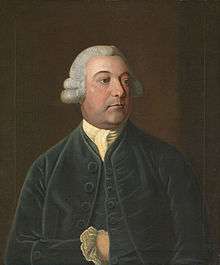HMS Pallas (1757)
| History | |
|---|---|
| Name: | HMS Pallas |
| Ordered: | 13 July 1756 |
| Builder: | William Wells, Deptford |
| Laid down: | July 1756 |
| Launched: | 30 August 1757 |
| Completed: | 8 October 1757 at Deptford Dockyard |
| Commissioned: | August 1757 |
| Fate: | Burnt to avoid capture, 24 February 1783 |
| General characteristics | |
| Class and type: | Venus-class fifth-rate frigate |
| Tons burthen: | 728 73⁄94 bm |
| Length: |
|
| Beam: | 35 ft 10.75 in (10.9411 m) |
| Depth of hold: | 12 ft 4.5 in (3.772 m) |
| Sail plan: | Full-rigged ship |
| Complement: | 240 officers and men |
| Armament: |
|
HMS Pallas was one of the three 36-gun Venus-class fifth-rate frigates of the Royal Navy. She was launched in 1757 and served until her loss in 1783.
Construction

The Venus class of 36-gun frigates were designed by Thomas Slade, the Surveyor of the Navy and former Master Shipwright at Deptford Dockyard. Alongside their smaller cousin, the 32-gun Southampton class, the Venus-class represented an experiment in ship design; fast, medium-sized vessels capable of overhauling smaller craft and singlehandedly engaging enemy cruisers or privateers.[1] As a further innovation, Slade borrowed from contemporary French ship design by removing the lower deck gun ports and locating the ship's cannons solely on the upper deck. This permitted the carrying of heavier ordinance without the substantial increase in hull size which would otherwise have been required in order to keep the lower gun ports consistently above the waterline.[2] The lower deck was instead used for additional stores, enabling Venus-class frigates to remain at sea for longer periods without resupply.[3]
Armament
Pallas' principal armament was 26 iron-cast twelve-pound cannons, located along her upper deck. The guns were constructed with shorter barrels as traditional twelve-pound cannons were too long to fit within the frigate's narrow beam.[4] Each cannon weighed 28.5 long cwt (3,200 lb or 1,400 kg)[5] with a gun barrel length of 7 feet 6 inches (2.29 m) compared with their 8 feet 6 inches (2.59 m) equivalent in larger Royal Navy vessels.[4]
The twelve-pound cannons were supported by ten six-pounder guns, eight on the quarterdeck and two on the forecastle, each weighing 16.5 long cwt (1,800 lb or 800 kg) with a barrel length of 6 feet (1.8 m).[2] Taken together, the twelve-pound and six-pound cannons provided a broadside weight of 189 pounds (86 kg).[6] She was also equipped with twelve 1⁄2-pound swivel guns for anti-personnel use.[5] These swivel guns were mounted in fixed positions on the quarterdeck and forecastle.[4]
References
Bibliography
- Winfield, Rif (2007). British Warships in the Age of Sail, 1714 to 1792. London: Seaforth Publishing. ISBN 978-1-84415-700-6.
- Robert Gardiner, The First Frigates, Conway Maritime Press, London 1992. ISBN 0-85177-601-9.
- David Lyon, The Sailing Navy List, Conway Maritime Press, London 1993. ISBN 0-85177-617-5.